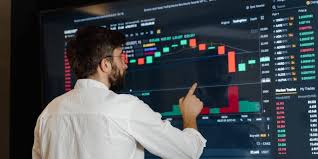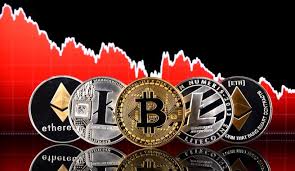Essential Guide to Crypto Trading Price Alerts 0

Understanding Crypto Trading Price Alerts
In the fast-paced world of cryptocurrency trading, staying informed about price movements is crucial. Many traders rely on Crypto Trading Price Alerts click here price alerts to monitor the market in real time. This article explores what price alerts are, why they matter, and how to set them up effectively.
What Are Crypto Trading Price Alerts?
Crypto trading price alerts are notifications that inform traders when a cryptocurrency reaches a specified price point. Traders can set these alerts based on their trading strategies, whether they are looking to buy on dips, sell at profits, or simply keep an eye on the market trends. Understanding how to utilize price alerts can enhance trading efficiency and decision-making.
Why Use Price Alerts?
Price alerts serve several essential functions for traders:

- Real-Time Information: Price alerts provide immediate information about changes in market conditions, allowing traders to react promptly.
- Strategy Implementation: Alerts help traders stick to their strategies by notifying them only when conditions align with their trading plan.
- Emotion Control: By relying on pre-set alerts, traders can mitigate emotional trading decisions that often lead to losses.
- Market Opportunities: Quick notifications can assist traders in seizing opportunities that they might have missed otherwise.

How to Set Up Price Alerts
Setting up price alerts is relatively straightforward. Here are some steps to help you get started:
- Choose a Trading Platform: Many cryptocurrency exchanges and trading platforms offer built-in alert systems. Select one that supports your preferred cryptocurrencies.
- Determine Your Alert Criteria: Decide on the price points or percentage changes that will trigger alerts. This could be based on historical price data or personal benchmarks.
- Activate Notifications: Most platforms allow you to receive alerts via various channels such as email, SMS, or push notifications on an app. Choose the method that works best for you.
- Monitor Alert Performance: Regularly review how effective your alerts are. You may need to adjust your criteria based on market volatility or your trading strategy.
Types of Price Alerts
There are several types of price alerts that traders can set:
- Static Alerts: These are set at specific price levels. For instance, a trader might set an alert for Bitcoin at $30,000 to buy on a dip.
- Percentage Change Alerts: These alerts notify you when the price increases or decreases by a certain percentage, allowing for more flexible trading.
- Multi-Coin Alerts: Some platforms allow traders to set alerts for multiple cryptocurrencies simultaneously, simplifying the monitoring process.
Best Practices for Using Crypto Trading Price Alerts
To maximize the effectiveness of price alerts, consider the following best practices:
- Stay Disciplined: Stick to your trading strategy. Don’t let FOMO (Fear of Missing Out) cause you to act impulsively when an alert goes off.
- Adjust Alerts Based on Market Conditions: Markets are dynamic, and the criteria for alerts should evolve based on market trends and volatility.
- Combine with Technical Analysis: Use alerts in conjunction with technical indicators to enhance your understanding of market movements.
- Test Different Parameters: Experiment with various alert settings to see what works best for your trading style and strategy.
Conclusion
In the ever-evolving realm of cryptocurrency trading, price alerts have emerged as a vital tool for traders. By ensuring timely notifications about significant price movements, traders can make informed decisions, adhere to their strategies, and ultimately enhance their trading performance. Understanding how to set and manage these alerts can provide a competitive edge in a market characterized by rapid changes and opportunities.
By incorporating effective price alert systems into your trading arsenal, you can navigate the cryptocurrency landscape with greater confidence and precision. Remember, the goal is not just to trade but to trade wisely.